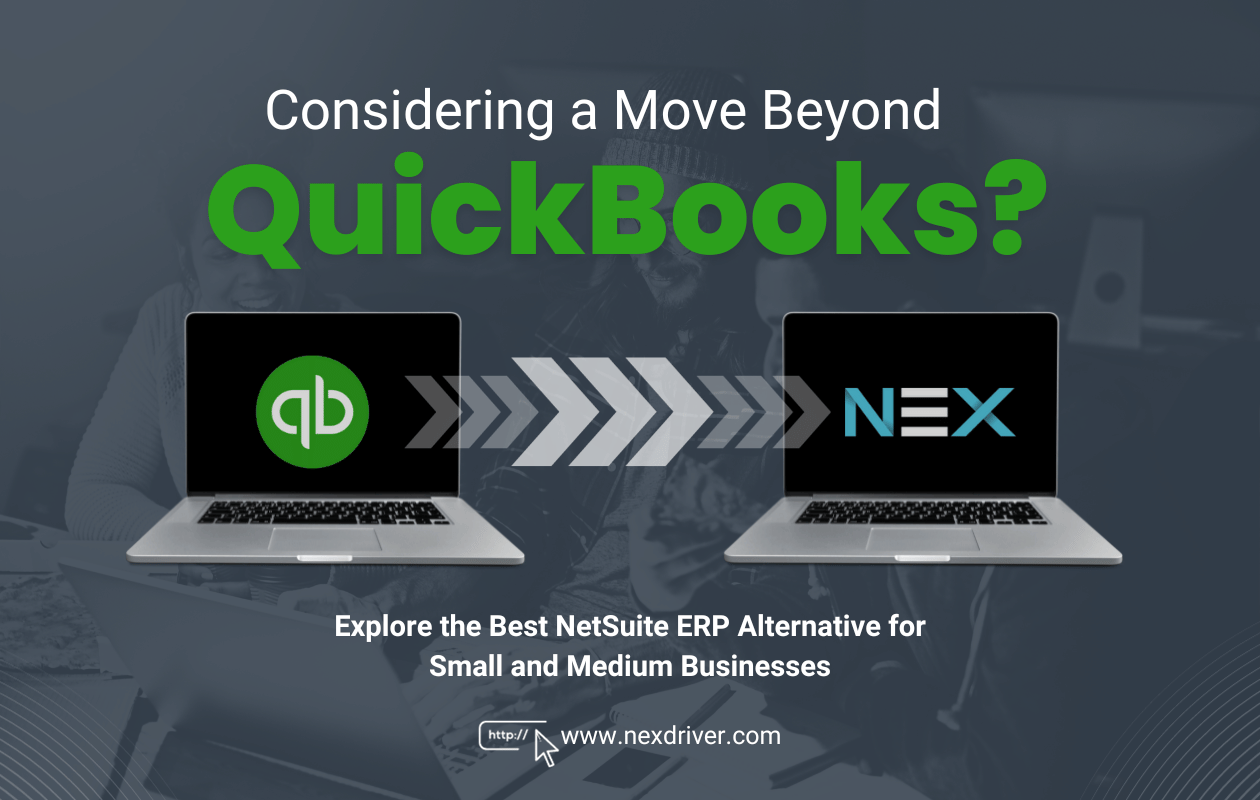1 min read
Maximizing ROI: The Benefits of Business Management Software
Tech leaders in the finance sector are always looking for ways to improve their operations, aiming to boost both efficiency and financial outcomes. A...
In the 1990's we started a software company with a team spread-out across the country working remotely. No software solution existed that would allow us to streamline our operations and improve efficiency - so we built our own.
“Working at NEX has been a game-changer for me. I’ve never been part of a team so committed to innovation and collaboration. Every day, I feel like my ideas truly make an impact.”
— Jordan M., Product Manager

Discover how NEX significantly enhanced First Atlantic Commerce's
operations, billing processes, and overall data management efficiency.
6 min read
NEX Marketing : Oct 30, 2024 10:35:58 AM
Scalability goes beyond mere technology infrastructure; it encompasses organizational structures, processes, and strategies vital for sustainable growth. For technology leaders, this means adopting a holistic approach to scalability, from selecting adaptable software and infrastructure solutions like cloud computing and microservices architectures to fostering a culture that embraces change and innovation. For example, a fintech startup successfully managed a 300% increase in transaction volumes over a single fiscal quarter by leveraging cloud-based solutions and dynamic approaches, illustrating the tangible benefits of scalable frameworks.
Understanding and implementing scalability is not just about survival—it's about setting the stage for future success. This involves strategic planning, investment in scalable technologies, and a continuous commitment to organizational agility.
TL;DR Summary: This blog post tackles the critical importance of scalability for businesses, where managing growth effectively is paramount. We explore practical aspects of scalability, from infrastructure and software to organizational processes, and offer insights into how technology leaders can navigate these challenges. By prioritizing scalability, companies can not only handle increased workloads and customer demands efficiently but also maintain competitive edge and foster sustainable growth.
Understanding the importance of scalability is vital for businesses at all stages, but it becomes increasingly critical as they grow and evolve. Scalability refers to the ability of a business to handle an increasing amount of work or its capacity to accommodate growth without compromising performance, efficiency, or quality. This concept is not limited to the technical aspects, such as software and infrastructure, but also extends to organizational structures, processes, and strategies. Below, we dive deeper into why scalability is indispensable for businesses seeking sustainable growth and competitive advantage.
Handling Increased Workloads and Customer Demands
As businesses grow, they naturally encounter higher workloads and an increase in customer demands. Scalability allows them to manage these increases efficiently. For instance, an e-commerce platform must be able to handle spikes in traffic during holiday seasons without crashing, ensuring a smooth customer experience. Scalable systems and processes are designed to cope with such demands, ensuring that businesses can maintain high service levels without incurring unsustainable costs.
Proactive Planning for Business Growth
Understanding scalability enables businesses to proactively plan for growth. This means not just envisioning where the business wants to be but also ensuring that the infrastructure, software, and organizational processes are in place to support this growth. For example, a business might adopt cloud computing solutions that can be easily expanded as the company grows, rather than investing in expensive, fixed-capacity hardware that may soon become inadequate.
Flexibility and Agility
The ability to scale up or down as needed offers businesses unparalleled flexibility and agility. This is particularly important in a business environment characterized by rapid changes and unpredictability. Scalable solutions allow businesses to adjust their resources and strategies in response to market fluctuations, economic shifts, and other external factors. This agility ensures that businesses can respond to challenges and seize opportunities more effectively.
Expanding into New Markets
Scalability is a key enabler for businesses looking to expand into new markets. Entering new geographic or product markets often requires significant adjustments in operations, supply chains, and marketing strategies. Scalable processes and systems facilitate this expansion, allowing businesses to adapt their operations to meet the unique demands and regulatory requirements of new markets without overextending their resources.
Staying Competitive in a Rapidly Evolving Industry
Staying competitive means being able to quickly adapt to changing industry trends, consumer behaviors, and technological advancements. Scalable businesses are better positioned to implement new technologies, adopt innovative practices, and respond to new competitors, ensuring they remain at the forefront of their industries.
Cost Efficiency
Scalability contributes to cost efficiency by ensuring that resources are used optimally. Scalable solutions often involve variable costs that align with business volumes, as opposed to fixed costs that remain constant regardless of demand. This means that businesses can avoid paying for unused capacity during slower periods and can allocate resources more effectively during peak times.
Scalability is not just a technical requirement but a strategic imperative that affects every aspect of a business. By prioritizing scalability, businesses can ensure that they are prepared for growth, adaptable to change, and capable of maintaining performance standards in the face of increasing demands and opportunities. This holistic approach to scalability supports sustainable development, operational resilience, and long-term success.
Identifying your business needs and goals is not just about setting a direction for your company; it's about ensuring that every aspect of your business is aligned with achieving your long-term vision and strategic objectives. The importance of this process is highlighted by various professionals and in different contexts, emphasizing that identifying business needs can happen at multiple levels within an organization, from the enterprise level to specific business units. This process is vital for understanding market opportunities, strategic goals, or issues within current systems that require addressing.
Moreover, aligning your IT architecture with your business needs is a prime example of how understanding and articulating business needs and goals can significantly impact your company's strategic success. For instance, Enterprise Architecture Management (EAM) should be seen as a change management initiative rather than just a new IT project. According to an article by McKinsey & Company, the focus should be on transforming business capabilities at the center of IT architecture, which involves defining the architecture in a way that the business can understand and that serves its needs efficiently. This approach not only improves communication between business and IT leadership but also ensures that changes are sustainable and aligned with business goals. Companies that have effectively aligned their EAM with business needs have seen reductions in architecture-development labor by as much as 30% and halved the time to market for new applications.
These insights highlight the necessity of identifying your business needs and goals as the foundational step before pursuing scalable solutions. By doing so, you ensure that the scalable solutions you implement are not only effective in meeting your immediate scalability requirements but also contribute to the broader objective of supporting your business's growth and expansion plans.
In addition to the common scalable solutions such as cloud computing, virtualization, scalable databases, and modular software architectures, there are other innovative options available for businesses looking to expand and grow.
One such solution is edge computing, which involves processing data closer to the source rather than relying on centralized cloud servers. This approach enhances scalability by reducing latency and improving data processing speed, making it ideal for businesses with real-time processing needs.
Another emerging trend is containerization, which allows businesses to package and deploy applications in a consistent and scalable manner. By using containers, businesses can easily scale their applications up or down based on demand, making it a flexible and efficient solution for growth.
Moreover, serverless computing is gaining popularity for its scalability and cost-effectiveness. With serverless architecture, businesses can run applications without managing servers, automatically scaling based on workload demands. This enables businesses to focus on developing and deploying applications without worrying about infrastructure scalability.
By exploring these advanced scalable solutions in addition to the traditional ones, businesses can tailor their approach to meet their specific growth requirements and stay ahead in today's competitive business landscape. Each solution offers unique benefits and capabilities, providing businesses with a diverse toolkit to ensure seamless scalability and sustainable growth.
Successfully implementing scalable solutions requires a strategic approach that encompasses careful planning and meticulous execution. It is essential to thoroughly assess the scalability of the chosen solutions to ensure they can effectively accommodate future growth and evolving business needs.
Conducting scalability tests is a crucial step in this process, as it allows businesses to simulate various scenarios and determine how well the solutions can handle increased workloads or demands. Analyzing performance metrics provides valuable insights into the efficiency and effectiveness of the scalable solutions, helping identify areas for improvement and optimization.
Optimizing the implementation process is key to seamless scalability. This involves aligning the solutions with the organization's existing infrastructure, processes, and strategies. Factors such as cost, security, and compatibility with current systems must be carefully considered to ensure a smooth transition and integration of scalable solutions.
McKinsey's research highlights that for both successful and unsuccessful transformations, the degree of ownership and commitment from the organization's leaders significantly influences the outcome. This commitment involves more than just alignment; it's about a level of psychological investment that motivates proactive action. Moreover, successful implementers are distinguished by their ability to retain more value at every stage of the implementation process compared to their peers, underlining the significance of effective prioritization, and the deployment of adequate resources and capabilities.
A McKinsey survey further revealed that only 37% of respondents reported successful implementations, pointing to the rarity and challenge of achieving successful change. Top implementers, or those who reported successful outcomes, shared common practices such as leaders owning and committing to the change, role modeling new behaviors, and devoting the necessary time and energy to support the change. Additionally, the survey indicates that digital transformations, which are increasingly common, necessitate new skill sets and approaches, especially in the assessment phase to ensure long-term sustainability and commitment to the changes
By adhering to best practices and collaborating closely with experienced professionals, businesses can navigate the complexities of implementing scalable solutions successfully. This collaborative approach fosters innovation, problem-solving, and continual improvement, ultimately maximizing the benefits of scalable solutions for sustained growth and competitive advantage.
Measuring the impact of scalable solutions is not only crucial for determining their effectiveness but also for making informed, data-driven decisions that can drive business growth. By tracking key performance indicators (KPIs) such as system performance, customer satisfaction, and revenue growth, businesses can gain valuable insights into how scalable solutions are influencing various aspects of their operations.
Regular monitoring and in-depth analysis of these metrics provide a comprehensive understanding of the success of the implementation and help identify specific areas for improvement. This proactive approach allows businesses to fine-tune their strategies and make necessary adjustments to ensure that their expansion efforts are yielding the desired results.
This data-driven approach not only validates the effectiveness of scalable solutions but also empowers businesses to adapt and evolve in a rapidly changing business landscape. Ultimately, by prioritizing measurement and analysis, businesses can stay ahead of the curve and maximize the benefits of scalability for long-term success.
Scalability has evolved from a tech-centric concept to a core organizational strategy. To excel, businesses must integrate scalability into their operations. It's not just about enhancing your tech stack but being ready to pivot, expand, and embrace change. Explore how NEX can support your growth and operational excellence. Discover a future where scalability is central to your success. Visit https://www.nexdriver.com/ for a demo tailored to your needs, and let's work together towards a future of growth, innovation, and resilience.
.png)
1 min read
Tech leaders in the finance sector are always looking for ways to improve their operations, aiming to boost both efficiency and financial outcomes. A...

As the digital landscape evolves, many small and medium-sized businesses (SMBs) contemplate the transition from basic financial management tools to...

How can technology leaders turn operational bottlenecks into opportunities for efficiency and innovation? A study from McKinsey & Company reveals a...